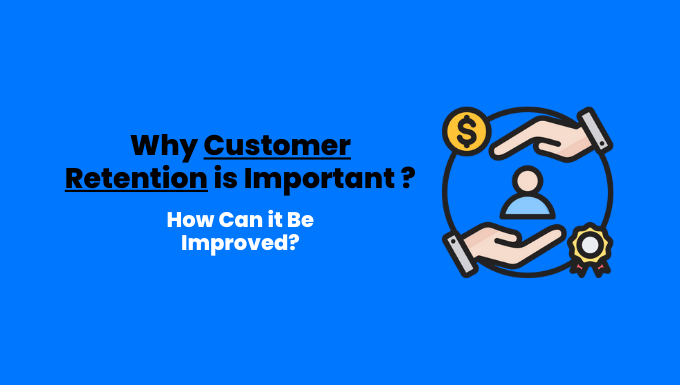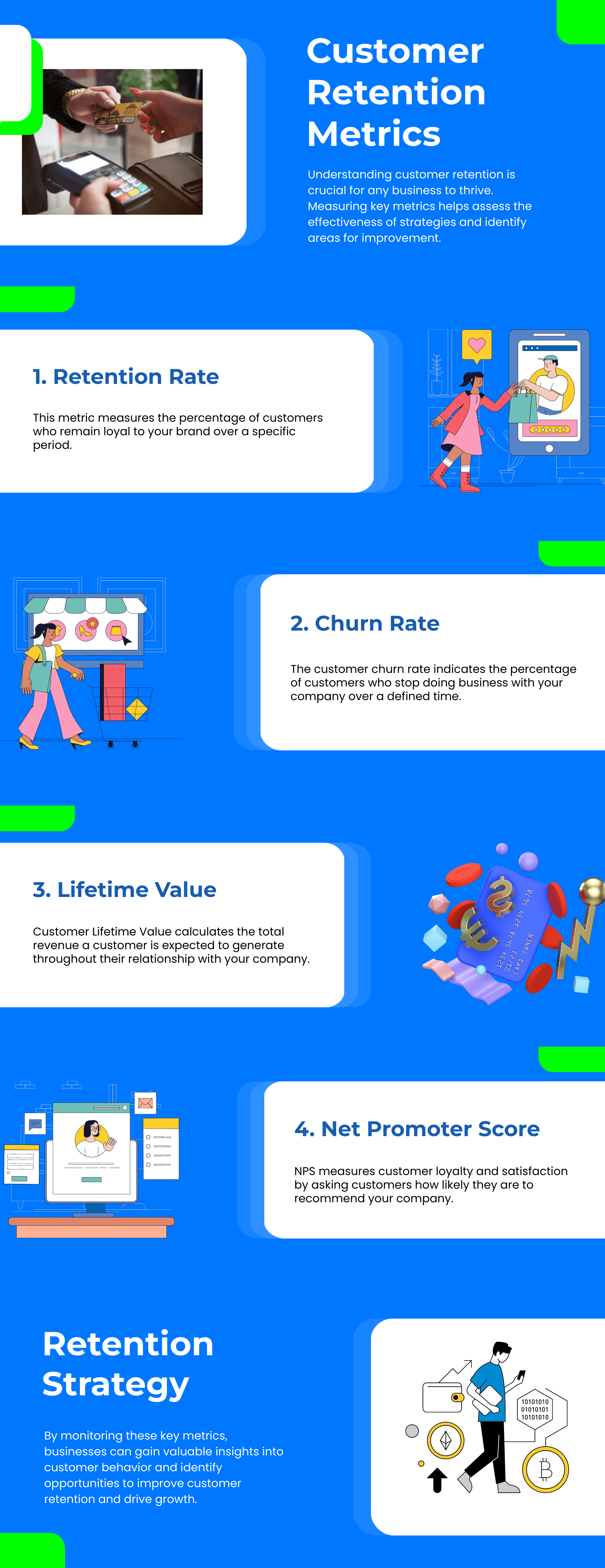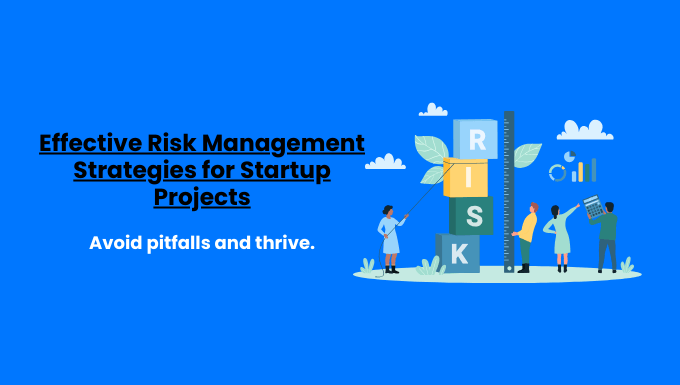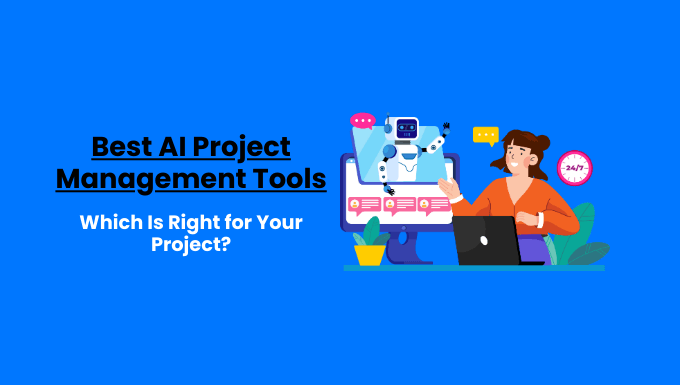Are you losing customers faster than you can acquire them?
Customer retention could be the game-changer your business needs. Imagine a world where your existing customers not only stick around but become your biggest advocates.
Intriguing, right?
Discover how focusing on customer retention can dramatically boost your bottom line and create a loyal customer base that keeps coming back for more.
Ready to transform your business? Let’s dive into the power of customer retention.
Key Takeaways:
- Customer retention is 5-25 times more cost-effective than acquisition.
- Increasing retention by just 5% can boost profits by 25-95%.
- Track metrics like churn rate, retention rate, and customer lifetime value.
- Personalize communication and implement loyalty programs to improve retention.
- Regularly gather and act on customer feedback to enhance satisfaction.

Contents
ToggleThe difference between customer acquisition and customer retention
Customer acquisition focuses on gaining new customers for your business, while customer retention centers on nurturing and retaining the customers you already have.
While acquiring new customers is essential for business growth, retaining existing customers is equally important for long-term success.
Importance of Customer Retention
Customer retention is crucial for business success due to several reasons: it reduces the dependency on new customer acquisition, fosters customer loyalty, and improves the customer rate over time.
- Acquiring a new customer can cost five times more than retaining an existing one. By focusing on customer retention, businesses can save on marketing expenses and increase profitability.
- Existing customers are more likely to make repeat purchases and spend more than new customers, a testament to why customer retention is essential for maximizing profitability. By building a loyal customer base, businesses can secure a steady revenue stream and foster brand advocacy.
- Loyal customers are more forgiving of occasional mistakes and are more likely to provide valuable feedback for improvement, highlighting the link between customer satisfaction and loyalty. By prioritizing customer retention, businesses can enhance their products and services based on customer insights.
Examples and Case Studies Demonstrating the Impact of High Customer Retention Rates
- Amazon Prime boasts an impressive customer retention rate of 96%, attributed to its personalized recommendations, fast delivery, and exclusive perks for members. This high retention rate has contributed to Amazon’s dominance in the e-commerce industry.
- Starbucks‘ loyalty program, which offers rewards and personalized offers to frequent customers, has led to a 25% increase in customer retention and a significant boost in revenue. This demonstrates the power of customer loyalty programs in driving repeat business and underscores the significance of investing in customer-focused initiatives to increase customer loyalty.
Key Metrics to Measure Customer Retention

To track the effectiveness of your customer retention efforts, it’s essential to monitor the following key metrics:
- Customer Retention Rate: This metric measures the percentage of customers who continue to do business with your company over a specific period. A high customer retention rate indicates strong customer loyalty and satisfaction.
- Customer Churn Rate: The customer churn rate measures the percentage of customers who stop doing business with your company over a given period. By reducing the churn rate, businesses can improve customer retention and increase revenue.
- Customer Lifetime Value (CLV): An essential metric in understanding the long-term value of creating a customer relationship and the impact on customer retention. CLV calculates the total revenue a customer is expected to generate over their entire relationship with your company. By increasing CLV through effective customer retention strategies, businesses can maximize profitability and long-term customer value.
- Net Promoter Score (NPS): NPS measures customer loyalty and satisfaction by asking customers how likely they are to recommend your company to others. A high NPS indicates strong customer advocacy and can lead to increased customer retention and brand growth.
Proven Customer Retention Strategies
1. Enhancing Customer Experience
When it comes to customer retention, providing exceptional customer service is crucial, demonstrating why customer retention refers to an essential component of business success.
Businesses that excel in delivering outstanding experiences, like Zappos and Amazon, understand the significance of personalized interactions.
By making customers feel valued and appreciated, they are more likely to remain loyal.
2. Implementing a Customer Loyalty Program
Loyalty programs are powerful tools for boosting customer retention rates, serving as an example of customer retention in action and highlighting the idea that retention refers to the ability to keep a customer engaged long-term.
They provide incentives for customers to keep returning.
These programs can take various forms, such as point-based systems, tiered rewards, and subscription models, each an example of customer retention strategies in practice.
Successful examples include Starbucks‘ loyalty program and Sephora‘s Beauty Insider program.
3. Leveraging Customer Feedback
Collecting and analyzing customer feedback is essential for enhancing products and services.
By actively listening to customer suggestions and complaints, businesses can make meaningful improvements that resonate with their audience, enhance customer success, and foster customer loyalty.
Implementing changes based on customer feedback demonstrates that their opinions are valued.
4. Offering Exclusive Rewards and Incentives
Rewarding customers with exclusive perks can foster loyalty and retention.
Whether through discounts, freebies, or special offers, incentives can keep customers engaged and are a key tactic in the toolbox for strategies to improve customer retention, highlighting why customer retention refers to a set of actions.
The timing and frequency of these rewards significantly impact their effectiveness. Companies like Sephora and Starbucks have successfully implemented rewards programs that drive repeat business.
Effective Customer Retention Programs
Key Components of a Successful Retention Program
Customer retention is a vital aspect of a successful business.
A robust customer retention program ensures that existing customers are satisfied and continue to support your brand.
Here are some essential components to consider when building an effective retention program, emphasizing the importance of strategies to help increase customer loyalty satisfaction and retention.
- Understanding Your Customers: Meeting customer expectations is crucial for maintaining high customer satisfaction and loyalty. To create a successful customer retention program, it’s crucial to understand your customers thoroughly. By delving into their needs, preferences, and behaviors, you can tailor your retention efforts to meet their expectations effectively.
- Personalized Communication: Engaging with your customers on a personal level can significantly impact their loyalty. Utilize their names in communications, provide personalized recommendations, and demonstrate that you value their business. This personal touch can foster a deeper connection with your customers.
- Exceptional Customer Service: Exceptional customer service is non-negotiable when it comes to retention. Strive to provide top-notch service at every interaction point to improve retention and enhance customer loyalty. Address any issues promptly, go the extra mile to exceed expectations, and showcase your commitment to customer satisfaction.
- Loyalty Programs: These programs are instrumental in explaining why customer retention refers to a necessary strategy for business resilience. effective strategies to increase customer retention and satisfaction. Implementing loyalty programs underscores the commitment to invest in customer incentives, aiming to increase customer loyalty and affirming why customer retention is important. is a proven strategy to incentivize repeat business. Offer rewards such as discounts, exclusive offers, or other perks to encourage customer loyalty and repeat purchases, illustrating a practical approach to customer retention.
Steps to Create and Implement a Retention Strategy
Crafting a successful customer retention strategy involves several key steps, underscoring the importance of retention refers to the ability to maintain customer relationships over time.
- Set Clear Goals: Essential for designing effective strategies to help enhance customer satisfaction and retention. Define specific objectives for your retention program, such as reducing churn rates, enhancing customer lifetime value, or improving overall satisfaction. Clear goals provide direction and focus for your strategy.
- Segment Your Customers: A strategy to increase engagement and satisfaction for every customer. Segment your customer base based on behavior, preferences, or demographics. This segmentation allows you to tailor your retention efforts to different customer groups effectively, increasing the likelihood of success.
- Implement Retention Tactics: Once you’ve established your goals and customer segments, implement targeted tactics to achieve them. This could involve personalized email campaigns, loyalty programs, proactive customer service initiatives, and more to meet and exceed customer expectations, showcasing how creating a customer-centric experience is central to improving retention.
- Track and Analyze Results: Monitor the performance of your retention program by tracking essential metrics like customer retention rate, churn rate, and customer lifetime value to understand the success of your efforts in reducing customer churn. Analyzing this data enables you to make informed decisions and refine your strategy as needed.
Monitoring and Adjusting the Retention Program Over Time
A successful customer retention program requires ongoing monitoring and adaptation.
Here’s how you can ensure your retention efforts remain effective:
- Regularly evaluate key performance indicators to assess the success of your retention initiatives and monitor customer rate performance, a critical aspect of understanding why customer retention refers to a crucial business strategy.
- Gather feedback from customers to gauge satisfaction levels and identify areas for improvement, which is a proactive measure to improve retention and foster customer loyalty.
- Stay informed about industry trends and best practices to incorporate new strategies into your retention program effectively.
Utilizing Technology and Tools
In today’s digital landscape, leveraging technology is essential to enhance customer retention efforts, using customer data to personalize experiences and foster loyalty.
Consider utilizing the following tools:
- CRM Systems: Integral for managing customer data, tracking customer interactions, and facilitating strategies to improve customer retention. Customer Relationship Management (CRM) systems help streamline customer interactions, manage leads, and deliver personalized communication efficiently.
- Marketing Automation Tools: Automate personalized marketing campaigns, send targeted messages, and nurture customer relationships at scale using marketing automation tools, a strategy vital for improving satisfaction and retention.
- Analytics Tools: Essential for understanding customer preferences and improving retention. Utilize analytics tools to measure the success of your retention program. Track metrics like customer retention rate, churn rate, and customer lifetime value to evaluate the effectiveness of your efforts.
Customer Engagement and Support: Key to Business Success
When aiming to build a successful business, customer engagement emerges as a crucial element. Engaged customers tend to be more loyal and make repeat purchases, significantly impacting your revenue.
Here are some strategies to maintain customer engagement and encourage repeat business:
Fostering Customer Engagement
One of the key strategies to keep customers engaged is through effective email marketing campaigns.
Utilizing personalized emails to inform customers about new products, promotions, and company updates can create a sense of exclusivity and drive engagement.
Additionally, leveraging social media platforms such as Instagram, Facebook, and Twitter to interact with customers, respond to queries, and showcase your brand’s personality can help build a community around your brand.
Importance of Creating Valuable Content for Customers
In the realm of customer engagement, content plays a vital role. Providing valuable and relevant content to customers can strengthen your relationship with them and encourage repeat business.
Valuable content can come in various forms, including informative blog posts, how-to guides, tutorials, engaging videos, and podcasts.
Examples of Engaging Customer Content
Looking for inspiration on creating engaging customer content? Consider using customer insights to tailor your content strategy, enhancing both customer retention and new customer acquisition.
Successful brands like Nike and Apple have mastered the art of captivating their audience.
Nike’s “Just Do It” campaign inspires customers to push their limits, while Apple’s product launch events create excitement and anticipation among their loyal customer base.
Providing Exceptional Customer Support
Apart from engaging customers through content and marketing efforts, providing exceptional customer support is essential for building long-lasting relationships.
Here are some key strategies to ensure top-tier customer support for your business, including building a dedicated customer service team that contributes to positive customer experiences and customer retention.
- Training Staff for Excellent Customer Service: Invest in training programs to equip your staff with the skills and knowledge to provide an exceptional customer service experience. Empower your team to go above and beyond to meet customer needs.
- Implementing a Multi-Channel Support System: Offer customers multiple channels to reach out for support, such as live chat, email, phone support, and social media. Providing a seamless and efficient support experience can enhance customer satisfaction.
Overcoming Customer Retention Challenges
Addressing Common Retention Challenges
When it comes to customer retention, businesses often encounter challenges that can significantly impact their bottom line. Identifying the reasons behind customer churn is essential for developing effective strategies to address and reduce it.
Understanding why customers are leaving enables businesses to implement targeted solutions to enhance retention rates.
Identifying Reasons for Customer Churn
Customer churn, which refers to the rate at which customers discontinue doing business with a company, can stem from various factors, highlighting why strategies to improve customer retention are important.
Some common reasons for customer churn include:
- Poor customer service
- Lack of product or service quality
- High prices
- Lack of personalization
- Ineffective communication can significantly reduce customer satisfaction and hinder customer retention efforts, underscoring the need to provide excellent customer service.
By analyzing customer feedback, conducting surveys, and monitoring customer interactions, businesses can pinpoint the reasons behind customer churn and proactively take steps to address them.
Strategies to Address and Reduce Churn
Once the reasons for customer churn are identified, businesses can implement strategies to enhance retention rates.
Some proven strategies to address and reduce churn include:
- Enhancing customer service
- Improving product or service quality
- Implementing loyalty programs
- Personalizing customer interactions
- Communicating effectively with customers
Using Data to Predict Customer Behavior
Analyzing customer data provides valuable insights into customer behavior, preferences, and purchasing patterns, which is crucial for using customer information effectively to foster customer loyalty.
This data empowers businesses to predict future behavior and anticipate customer needs, enabling them to tailor retention strategies accordingly.
Personalizing Retention Strategies Based on Customer Data
Personalization plays a pivotal role in improving customer retention.
By leveraging customer data to personalize interactions, businesses can create a more engaging and relevant experience for customers, which is fundamental in fostering customer loyalty and reducing customer churn.
Whether through personalized recommendations, targeted promotions, or customized communication, personalization significantly impacts customer loyalty and retention rates.
Future Trends in Customer Retention
In the dynamic world of business, customer retention stands out as a crucial focus for companies striving to cultivate a loyal customer base and achieve long-term success.
As technology advances, the strategies and tools available to enhance customer retention rates continue to evolve.
Let’s explore some emerging trends that are shaping the future of customer retention.
Emerging Trends and Technologies
- AI and Machine Learning in Customer Retention: Artificial Intelligence (AI) and machine learning are transforming customer interactions for businesses. By analyzing extensive data sets, AI can predict customer behavior, personalize marketing strategies, and pinpoint customers at risk of churning.
- The Role of Chatbots and Virtual Assistants in Enhancing the Customer Service Experience and Meeting Customer Expectations: Chatbots and Virtual Assistants are gaining popularity in customer service, offering a new way to create positive customer experiences and support new customer acquisition. These AI-driven tools offer immediate support, address customer queries, and streamline the purchasing process, thereby enriching the overall customer experience.
- Predictive Analytics for Proactive Retention Strategies, utilizing data to anticipate customer needs and improve retention rates: Predictive analytics utilizes historical data and machine learning algorithms to predict future trends and behaviors. Through predictive analytics, businesses can proactively meet customer needs, anticipate churn, and tailor retention approaches to individual customers.
Preparing for the Future
- Adapting to Changing Customer Expectations: Customer expectations evolve continuously, influenced by technological progress and market dynamics. To stay competitive, businesses must adjust their customer retention strategies to align with the evolving needs and preferences of their target audience, using customer data to inform their approaches.
- Staying Ahead of Competitors with Innovative Retention Strategies: In today’s competitive environment, innovation is key to differentiation. Companies that invest in cutting-edge technologies, personalized experiences, and seamless customer journeys are better positioned to retain customers and surpass their competitors.
Examples of Companies Leading the Way in Customer Retention Innovation
Several companies have successfully implemented innovative customer retention strategies to foster growth and build a loyal customer base, showcasing the best practices for customer success.
Let’s examine some industry leaders in customer retention innovation:
- Amazon: The e-commerce behemoth leverages AI and machine learning to suggest products, personalize the shopping experience, and boost customer satisfaction, illustrating why customer retention is a key goal for digital marketplaces.
- Netflix’s focus on customer success has been central to its growth strategy: By harnessing predictive analytics, Netflix offers personalized content recommendations, reducing churn and enhancing customer engagement.
- Starbucks: The coffee chain utilizes a mobile app and loyalty program to incentivize customer loyalty, drive repeat purchases, and deliver a seamless customer experience.
People Also Asked
1. Why is customer retention more cost-effective than customer acquisition?
When it comes to the success of your business, customer retention should be the star of the show. Here’s why:
- Cost Efficiency: Customer retention is a cost-effective strategy, highlighting why customer retention is essential for long-term business success. Studies show that retaining customers can be 5-25 times cheaper than acquiring new ones. This is because it involves less spending on marketing and sales efforts.
- Higher ROI: Loyal customers tend to spend more over time, directly impacting profitability and illustrating the financial benefits of providing excellent customer service. Increasing customer retention rates by just 5% can lead to a significant boost in profits ranging from 25-95%.
- Reduced Churn Impact: Maintaining existing customers helps reduce churn, ensuring a steady revenue stream without the constant need to replace lost customers. This stability is crucial for long-term business success.
2. What are the most important metrics to track for customer retention?
To gauge the effectiveness of your customer retention strategies, keep an eye on these essential metrics:
- Customer Churn Rate: Measures the percentage of customers who stop using your service over a specific period, a key factor in understanding why customer retention refers to a critical measure.
- Customer Retention Rate: Indicates the percentage of customers who continue to do business with you over time, a key metric for assessing the effectiveness of strategies to help improve customer retention.
- Customer Lifetime Value (CLV): Represents the total revenue expected from a single customer throughout their relationship with your business.
- Net Promoter Score (NPS): Gauges customer loyalty and satisfaction by measuring their likelihood to recommend your business, a key customer retention metric.
- Repeat Purchase Rate: Tracks how often customers return to make additional purchases, reflecting their loyalty.
3. How can small businesses improve customer retention without a large budget?
Even with limited resources, small businesses can boost customer retention through:
- Personalized Communication: Use email marketing and personalized messages to engage customers and show appreciation.
- Loyalty Programs: Implement cost-effective loyalty programs to reward repeat customers and incentivize continued patronage.
- Customer Feedback: Regularly gather and act on customer feedback to improve products and services, demonstrating a commitment to customer satisfaction and fostering higher customer retention rates.
- Social Media Engagement: A strategy to increase customer success by fostering direct communication and feedback from every customer. Leverage social media platforms to interact with customers, provide updates, and offer support, building a strong online presence.
4. What role does customer feedback play in retention strategies?
Customer feedback is a cornerstone of successful retention strategies as it:
- Identifies Improvement Areas: Crucial for enhancing customer success and retention. Feedback helps pinpoint areas for enhancement, directly addressing customer needs.
- Enhances Customer Experience: Acting on feedback leads to an improved customer experience, fostering satisfaction and loyalty.
- Builds Trust and Loyalty: Essential components of customer retention, which refers to the ability of a business to create a loyal customer base and reduce customer churn. Soliciting and responding to feedback shows customers their opinions matter, building trust and long-term loyalty.
5. How often should businesses review their customer retention strategies?
To ensure your retention strategies remain effective, consider these best practices to foster customer loyalty and reduce customer churn.
- Regular Reviews: Aim to review your strategies quarterly to align them with evolving customer needs and market trends.
- After Major Changes: Conduct reviews after significant business changes like product launches or market expansions to ensure alignment.
- Continuous Monitoring: A vital strategy to improve retention by keeping track of customer engagement and satisfaction. Implement ongoing monitoring through customer feedback and retention metrics to stay proactive in addressing issues and opportunities.







